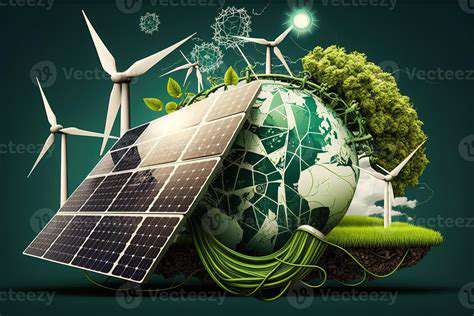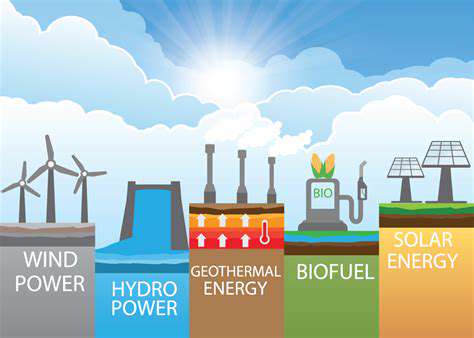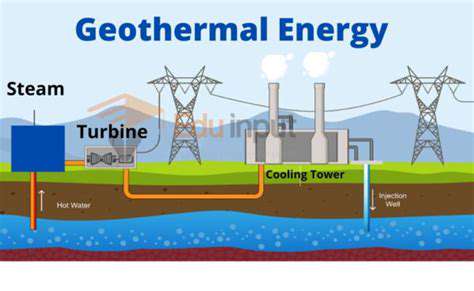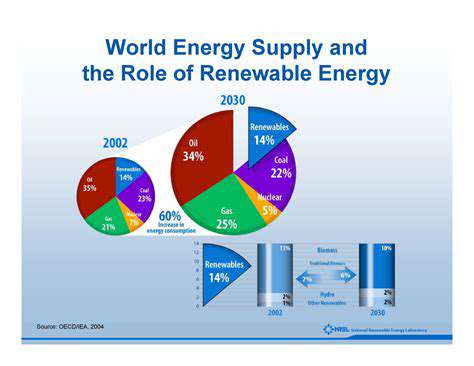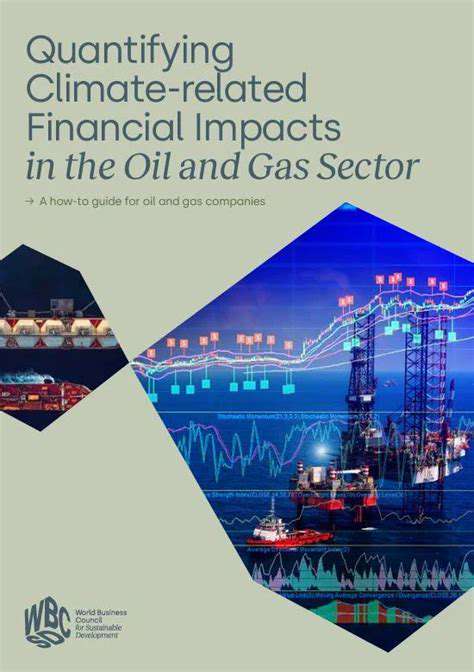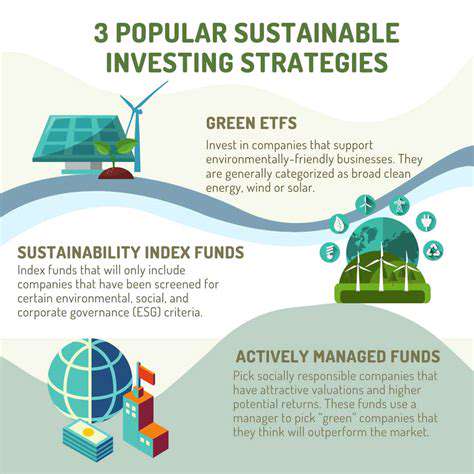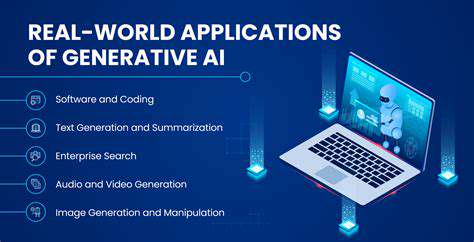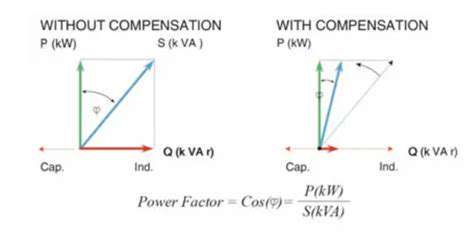Adapting Infrastructure for Renewable Energy Integration
Developing Smart Grid Technologies for Real-Time Control
Real-Time Data Acquisition and Processing
A crucial aspect of developing smart grid technologies lies in the ability to collect and process data in real-time. This involves sophisticated sensors strategically placed throughout the grid infrastructure to monitor various parameters such as voltage, current, frequency, and power flow. These sensors must be capable of transmitting data instantaneously to a central control system, ensuring minimal latency and maximizing the responsiveness of the grid to changing conditions. Advanced data analytics algorithms are also needed to interpret this real-time data, identifying anomalies, predicting potential issues, and optimizing grid performance.
The volume of data generated by these sensors is immense, requiring robust data storage and processing capabilities. Efficient algorithms for data filtering, noise reduction, and pattern recognition are essential to extract meaningful insights from the raw data. This processing step is critical for enabling predictive maintenance, proactive fault detection, and optimized resource allocation within the grid.
Advanced Control Systems and Algorithms
Smart grids necessitate the development of advanced control systems capable of dynamically adjusting grid operations based on real-time data. These systems should be capable of managing the flow of electricity in a complex network, balancing supply and demand, and mitigating potential disruptions. This requires sophisticated algorithms that can account for various factors, including renewable energy fluctuations, load variations, and grid topology changes.
A key component of these advanced control systems is the implementation of artificial intelligence (AI) and machine learning (ML) techniques. These technologies can be used to develop predictive models for grid behavior, optimize energy distribution, and automate control processes. AI/ML-powered algorithms can learn from historical data and adapt to changing conditions, enabling the grid to respond more efficiently and effectively to unexpected events.
Furthermore, the security of these control systems is paramount. Robust security protocols and encryption methods are essential to protect the grid from cyberattacks and ensure the integrity of real-time data. This is critical for maintaining grid stability and reliability.
Integration of Renewable Energy Sources
Smart grid technologies play a pivotal role in integrating renewable energy sources, such as solar and wind power, into the existing infrastructure. These intermittent energy sources require sophisticated management systems to maintain grid stability and ensure reliable power delivery. Real-time control systems are essential to effectively balance the fluctuating output of renewables with the demand for electricity.
The integration of renewable energy sources requires smart grid technologies to manage energy storage effectively. This can involve integrating battery storage systems or other energy storage solutions into the grid to provide a buffer against fluctuations in renewable energy generation. These systems need to be seamlessly integrated with the existing grid infrastructure and intelligently controlled to maximize the utilization of renewable energy while ensuring grid stability.
Smart grids also need to facilitate the development of advanced demand response programs, allowing consumers to adjust their energy consumption based on real-time pricing signals and grid conditions. This dynamic interaction between the grid and consumers is crucial for optimizing the integration of renewable energy resources and maintaining grid balance.
Improved communication infrastructure is essential to support the integration of renewable energy and enable real-time control and monitoring of these distributed energy resources. This allows for efficient grid management and ensures a more reliable and sustainable energy system.
The integration of these technologies requires careful consideration of the environmental impact and long-term sustainability of the smart grid infrastructure.
Addressing Interoperability and Standardization
Interoperability Challenges in Renewable Energy
Integrating various renewable energy technologies, like solar, wind, and hydro, often faces interoperability challenges. Different systems and components may use incompatible communication protocols, data formats, and control strategies. This lack of standardization makes it difficult to seamlessly connect and manage these disparate sources of energy, potentially hindering the efficient operation and optimization of the entire renewable energy infrastructure. This complexity can also lead to increased costs and delays in project implementation.
Furthermore, the integration of renewable energy with existing grid infrastructure requires careful consideration of interoperability issues. Legacy systems might not be designed to handle the fluctuating nature of renewable energy generation, leading to stability problems and grid instability. Addressing these challenges requires proactive planning, standardization efforts, and the development of robust interoperability frameworks.
Standardization Efforts for Renewable Energy
Recognizing the importance of interoperability, several standardization bodies and initiatives are actively working to establish common communication protocols, data formats, and control strategies for renewable energy systems. These efforts aim to ensure that different technologies can communicate and exchange information effectively, leading to improved grid stability, increased efficiency, and reduced project costs.
These standards are crucial for fostering innovation and accelerating the deployment of renewable energy technologies. Examples of standardization efforts include defining common data models for energy storage systems, developing protocols for smart grid communication, and establishing guidelines for the integration of renewable energy sources into existing power grids. The active development of these standards contributes to a more interconnected and resilient energy system.
Data Exchange and Management
Effective data exchange is paramount to achieving interoperability in renewable energy systems. Standardized data formats ensure that data from various sources can be easily collected, processed, and analyzed. This enables better understanding of energy production patterns, grid performance, and overall system efficiency.
Robust data management systems are essential for storing, processing, and retrieving this critical information. These systems must be secure, reliable, and scalable to handle the increasing volume of data generated by renewable energy sources. Centralized data repositories can facilitate analysis and decision-making, improving the overall performance and management of the renewable energy infrastructure.
Communication Protocols and Standards
Establishing common communication protocols is vital for seamless data exchange between different renewable energy components, from individual generators to grid management systems. Open and standardized protocols facilitate automated communication, real-time monitoring, and remote control of renewable energy assets, enabling optimized operation and maintenance. The implementation of these protocols can significantly reduce operational complexities and improve the reliability of the entire system.
Impact on Grid Infrastructure
Adapting existing grid infrastructure to accommodate the fluctuating nature of renewable energy requires careful consideration of interoperability and standardization. Integrating renewable energy sources with traditional fossil fuel power plants demands the development of advanced grid control systems capable of managing variable energy flows. This necessitates the adoption of new technologies and standards to maintain grid stability and reliability in the face of increased renewable energy penetration.
Furthermore, the integration of renewable energy sources into microgrids and distributed energy resources requires customized communication protocols and data exchange strategies to ensure effective operation and management of these decentralized systems. This adaptation is crucial for maximizing the benefits of renewable energy integration.
